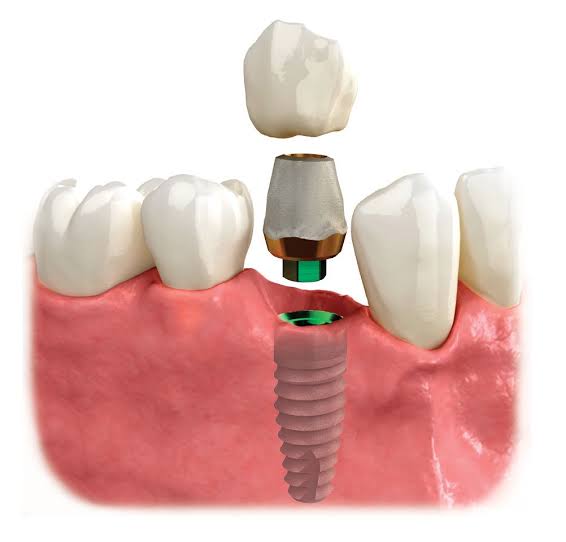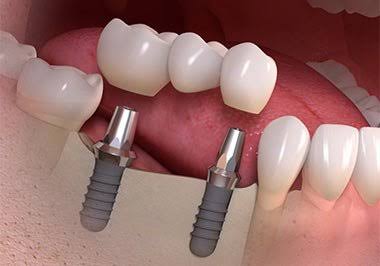Single tooth replacements are used to replace missing individual teeth.
After very careful and diligent case planning, we use digital technology making the procedure minimally invasive and comfortable to the patient. By the virtue of digital technology, we scan and digitally plan the placement of Implant. Then a surgical stent is fabricated to help achieve predictable outcome in the placement of implant via a keyhole created in the gums. After allowing sufficient time (4-6months) for healing a crown (the dental prosthesis) is then attached to the Implant.
Process
Step 1- Assessment- Involves through assessment of your case for suitability of Implant surgery by through clinical exam, radiographs, scans.
Step-2- Implant placement- Simple key hole surgery using digitally scanned 3D printed surgical stent to control the direction and depth of Implant. Now we allow 4-6months of time for bone to heal and cover over the Implant by process called as Osseo-integration.
Step-3- Restoration of Implant- Use the digital scan to take impression of Implant and have a custom made crown or bridge designed by the Lab and restore the Implant.
- No concern about tooth decay.


Single tooth implant restoration by guided (key hole)surgery
Single tooth restorations are used to replace missing individual teeth.
After diligent case planning, we use digital technology to make the procedure minimally invasive and comfortable to the patient. By the virtue of digital technology, we scan and digitally plan the placement of Implant. Then we procure a surgical stent which helps to achieve predictable outcome in the placement of implant through a key whole created in gums. After allowing sufficient time (4-6months) for healing a crown (the dental prosthesis) is then connected to the Implant.
Advantages of single tooth replacement by Implant versus Dental bridge
There is limited evidence that implant-supported single crowns perform better than tooth-supported fixed partial dentures (FPDs) on a long-term basis. However, considering the favourable cost-benefit ratio and the high implant survival rate, dental implant therapy is the first-line strategy for single-tooth replacement. Implants preserve the integrity of the teeth adjacent to the edentulous area, and it has been shown that dental implant therapy is less costly and more efficient over time than tooth-supported FPDs for the replacement of one missing tooth. The major disadvantage of dental implant surgery is the need for a surgical procedure.
Implant retained fixed bridge or implant supported bridge
An implant supported bridge (or fixed denture) is a group of teeth secured to dental implants so the prosthetic cannot be removed by the user. They are similar to conventional bridges, except that the prosthesis is supported and retained by one or more implants instead of natural teeth. Bridges typically connect to more than one implant and may also connect to teeth as anchor points. A fixed bridge may replace as few as two teeth (also known as a fixed partial denture) and may extend to replace an entire arch of teeth (also known as a fixed full denture). In both cases, the prosthesis is said to be fixed because it cannot be removed by the denture wearer.


 (07) 5370 2090
(07) 5370 2090